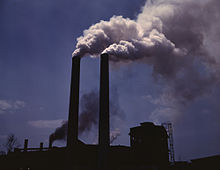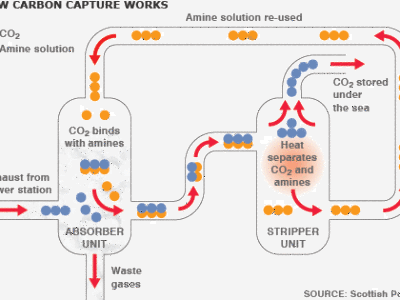climate change mitigation
Privatizing Paris
With the U.S. faltering, it’s time for corporations to begin a collaborative effort to cut emissions.
Many major corporations bemoaned Trump’s withdrawal from the Paris Agreement and pledged to continue their own environmental efforts. Why stop with acting solo? Why not band together? There’s power in joint action. Here are four options, from simplest to most ambitious. Taking the Paris Agreement Private. Under the Paris Agreement, nations agree to engage in …
Continue reading “Privatizing Paris”
CONTINUE READINGConfronting the “Emissions Gap”
Long-term thinking and short-term deficiencies in climate change mitigation
With the Paris Agreement now ratified by 86 countries, and entering into force this Friday, countries have defined their first targets—the first round of nationally determined contributions (NDCs). The United States has pledged to reduce GHG emissions 26-28% below 2005 levels by 2025. This initial round of NDCs is significant, but represents only a short timeframe and …
Continue reading “Confronting the “Emissions Gap””
CONTINUE READINGPromises to Keep
In the run-up to the Paris talks, the major economies have all pledged carbon reductions.
With Saudia Arabia’s pledge last week to cut emission, all of the world’s major economies are now on board. In a nutshell, here is what they are promising. Except as noted, the target dates are all 2030. A number of countries have subsidiary promises in terms of percentage of renewable energy or of bigger cuts premised …
Continue reading “Promises to Keep”
CONTINUE READINGResources on the Clean Power Plan
and EPA’s Other Rulemakings under Clean Air Act § 111
On August 3rd, EPA released its long-awaited Clean Power Plan, which implements Clean Air Act § 111(d) to set the first-ever national standards for carbon emissions from existing fossil-fuel-fired power plants. The Clean Power Plan calculates reasonably achievable performance rates for existing coal, oil, and natural gas power plants across the country, and assigns an …
Continue reading “Resources on the Clean Power Plan”
CONTINUE READINGA Ray of Hope [Breaking News]
President Obama and Chinese President Xi Jinping announced a major deal on climate change this morning. As summarized by the Washington Post, China, the world’s biggest emitter of greenhouse gases, pledged in the far-reaching agreement to cap its rapidly growing carbon emissions by 2030, or earlier if possible. It also set a daunting goal of …
Continue reading “A Ray of Hope [Breaking News]”
CONTINUE READINGGoing for Broke at the Climate Casino
The new Nordhaus book is good as far as it goes. But its analysis is muddled in crucial respects.
I finally had a chance to read Nordhaus’s new book, The Climate Casino, on a long flight. There are some goods lessons in the book. The book makes the case for serious mitigation, even rhough Nordhaus takes a fairly optimistic view about adaptation. Nordhaus also tells us that “it would be relatively inexpensive to slow …
Continue reading “Going for Broke at the Climate Casino”
CONTINUE READINGThe Significance of EPA’s Proposed Power Plant Standards
Although they won’t have immediate impacts, EPA’s proposed rules for new coal plants will indirectly help shape the future of the industry.
There’s an uproar over EPA’s proposed rules for CO2 emissions from new coal plants, even though no one expects anyone to build a new coal plant for at least a decade. I’ve argued (here and here) that the industry won’t have standing to challenge the rules because they won’t have any imminent impact. In fact, …
Continue reading “The Significance of EPA’s Proposed Power Plant Standards”
CONTINUE READINGCapturing Carbon
A recent CRS report provides a wealth of information about carbon capture. You can learn a lot about the various technologies and how close or far they are from possible adoption. But for most of us, the technical details matter less than the answers to some key questions: Is carbon capture technically feasible? Can it …
Continue reading “Capturing Carbon”
CONTINUE READINGClearing Up the Standing Mystery in the Biomass Case
In a post last week, I expressed puzzlement about the D.C. Circuit’s failure to discuss standing in Center on Biological Diversity v. EPA, which involved EPA’s decision to delay greenhouse gas regulations for facilities burning biomass. The question of standing in climate change cases has been controversial, so this mystery sparked extensive discussion among environmental …
Continue reading “Clearing Up the Standing Mystery in the Biomass Case”
CONTINUE READINGGood News On U.S. Carbon Emissions
At Copenhagen, President Obama pledged to cut carbon emissions by 17% by 2020 below 2005. According to Resources for the Future (RFF), the most respected think tank on energy issues, the U.S. is “on course to achieve reductions of 16.3 percent from 2005 levels in 2020.” RFF identifies three contributing factors: EPA regulations under the …
Continue reading “Good News On U.S. Carbon Emissions”
CONTINUE READING










